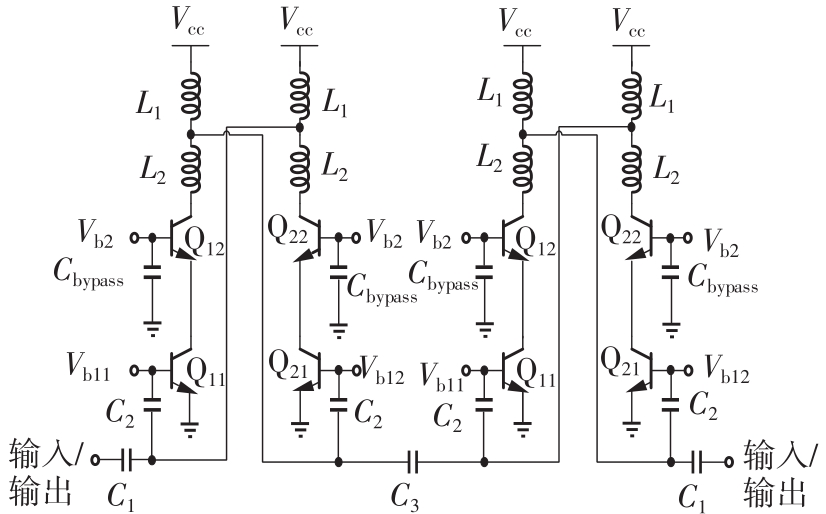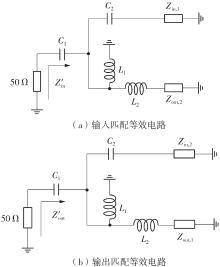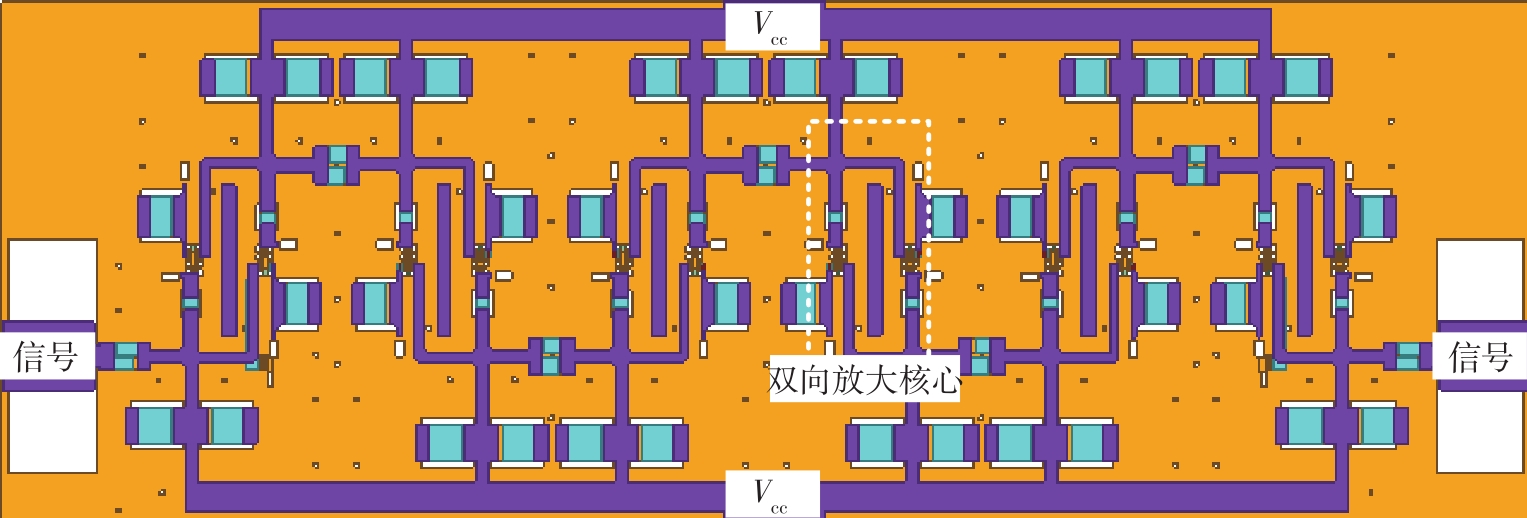| 1 |
LI Z, CHEN J, HOU D,et al .A 24-30-GHz TRX front-end with high linearity and load-variation insensiti-vity for mm-wave 5G in 0.13-μm SiGe BiCMOS [J]. IEEE Transactions on Microwave Theory and Techniques,2021,69(10):4561-4575.
|
| 2 |
PANG J, LI Z, KUBOZOE R,et al .21.1A 28 GHz CMOS phased-array beamformer utilizing neutralized bi-directional technique supporting dual-polarized MIMO for 5G NR [C]∥ Proceedings of 2019 IEEE International Solid-State Circuits Conference.San Francisco:IEEE,2019:344-346.
|
| 3 |
PANG J, LI Z, LUO X,et al .A CMOS dual-polarized phased-array beamformer utilizing cross-polarization lea-kage cancellation for 5G MIMO systems [J].IEEE Journal of Solid-State Circuits,2021,56(4):1310-1326.
|
| 4 |
KIM D, LEE D H,SIM S,et al .An X-band switchless bidirectional GaN MMIC amplifier for phased array systems [J].IEEE Microwave and Wireless Components Letters,2014,24(12):878-880.
|
| 5 |
ZHU W, ZHANG L, WANG Y .A 10.56-GHz broadband transceiver with integrated T/R switching via ma-tching network reuse and 0.3-2.1-GHz baseband in 28-nm CMOS technology [J].IEEE Transactions on Microwave Theory and Techniques,2019,67(7):2599-2617.
|
| 6 |
KIM J, BUCKWALTER J F .A switchless,Q-band bidirectional transceiver in 0.12-µm SiGe BiCMOS techno-logy [J].IEEE Journal of Solid-State Circuits,2011,47(2):368-380.
|
| 7 |
LI Z, PANG J, KUBOZOE R,et al .A 28 GHz CMOS differential bi-directional amplifier for 5G NR [C]∥ Proceedings of 2020 the 25th Asia and South Pacific Design Automation Conference.Beijing:IEEE,2020:5-6.
|
| 8 |
MENG F, MA K, YEO K S,et al .A compact 57-67 GHz bidirectional LNAPA in 65-nm CMOS technology [J].IEEE Microwave and Wireless Components Letters,2016,26(8):628-630.
|
| 9 |
CHO M K, KIM J G, BAEK D .A switchless CMOS bi-directional distributed gain amplifier with multi-octave bandwidth [J].IEEE Microwave and Wireless Components Letters,2013,23(11):611-613.
|
| 10 |
SIM S, JEON L, KIM J G .A compact X-band bi-directional phased-array T/R chipset in 0.13 µm CMOS technology [J].IEEE Transactions on Microwave Theory and Techniques,2012,61(1):562-569.
|
| 11 |
SUH B, KIM D, MIN B W .A 7-GHz CMOS bidirectional variable gain amplifier with low gain and phase imbalances [J].IEEE Transactions on Circuits and Systems I:Regular Papers,2018,65(9):2669-2678.
|
| 12 |
GONG Y, CHO M K, SONG I,et al .A 28-GHz switchless,SiGe bidirectional amplifier using neutra-lized common-emitter differential pair [J].IEEE Microwave and Wireless Components Letters,2018,28(8):717-719.
|
| 13 |
BAMERI H, MOMENI O .A high-gain mm-wave amplifier design:an analytical approach to power gain boos-ting [J].IEEE Journal of Solid-State Circuits,2017,52(2):357-370.
|
| 14 |
CASSAN D J, LONG J R .A 1-V transformer-feedback low-noise amplifier for 5-GHz wireless LAN in 0.18-μm CMOS [J].IEEE Journal of Solid-State Circuits,2003,38(3):427-435.
|
| 15 |
KHATIBI H, KHIYABANI S, AFSHARI E .A 183 GHz desensitized unbalanced cascode amplifier with 9.5-dB power gain and 10-GHz band width and -2 dBm saturation power [J].IEEE Solid-State Circuits Letters,2018,1(3):58-61.
|
| 16 |
SHINGHAL P, DUFF C I, SLOAN R,et al .Cascode cell analysis for ultra-broadband GaAs MMIC component design applications [C]∥ Proceedings of 2014 IEEE MTT-S International Microwave and RF Conference.Bangalore:IEEE,2013:1-4.
|
| 17 |
LI H, CHEN J, HOU D,et al .A 230-GHz SiGe amplifier with 21.8-dB gain and 3-dBm output power for sub-THz receivers [J].IEEE Microwave and Wireless Components Letters,2021,31(8):1004-1007.
|
| 18 |
YU J, CHEN J, ZHOU P,et al .A 300-GHz transmitter front end with -4.1-dBm peak output power for sub-THz communication using 130-nm SiGe BiCMOS technology [J].IEEE Transactions on Microwave Theory and Techniques,2021,69(11):4925-4936.
|
| 19 |
TURKMEN E, BURAK A, GUNER A,et al .A SiGe HBT D-band LNA with butterworth response and noise reduction technique [J].IEEE Microwave and Wireless Components Letters,2018,28(6):524-526.
|
| 20 |
ZHANG Y, LIANG W, JIN X,et al .3.2-mW ultra-low-power 173-207-GHz amplifier with 130-nm SiGe HBTs operating in saturation [J].IEEE Journal of Solid-State Circuits,2020,55(6):1471-1481.
|
| 21 |
KIJSANAYOTIN T, LI J, BUCKWALTER J F .A 70-GHz LO phase-shifting bidirectional frontend using linear coupled oscillators [J].IEEE Transactions on Microwave Theory and Techniques,2016,65(3):892-904.
|
| 22 |
GADALLAH A, EISSA M H, KISSINGER D,et al .A V-band miniaturized bidirectional switchless PALNA in SiGe:C BiCMOS technology [J].IEEE Microwave and Wireless Components Letters,2020,30(8):786-789.
|
| 23 |
ABDOMEROVIC I, RAMAN S .A millimeter wave loss-aware methodology for switchless PALNA integrated circuit design [J].IEEE Transactions on Computer-Aided Design of Integrated Circuits and Systems,2018,38(12):2177-2190.
|























